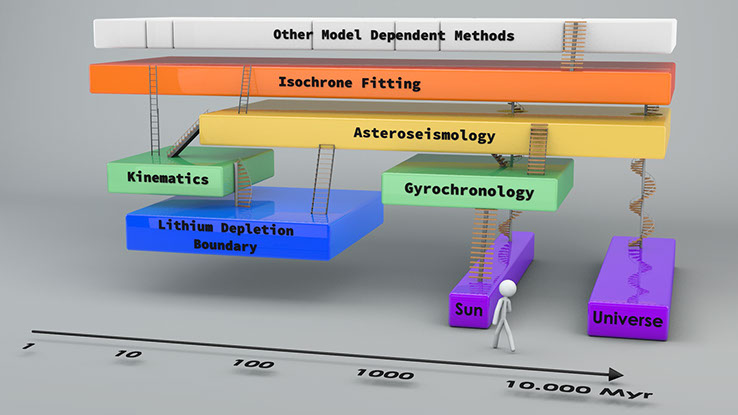The age is unarguably one of the most fundamental parameters to characterize any astrophysical object, from stars and planets to galaxies. In fact, the largest astrophysical missions of our times must rely on age estimates in order to conclusively interpret their measurements and answer the pressing astrophysical questions they were designed to solve (Gaia, key projects for JWST, PLATO, and so on). Yet, age remains a great unknown, since its determination faces multiple intertwined theoretical and observational challenges. The age of young clusters (age<125 Myr) can vary as much as 50% depending on the method, preventing from making major progresses in the study of stellar and planetary formation and evolution; starburst ages in galaxies are poorly constrained; and, at much older ages, some methods predict ages older than the universe for a significant fraction of globular clusters. The main culprit for this state of affairs is the lack of a universal age scale covering the entire time domain, and the absence of a systematic and robust cross-calibration of the various methods we use nowadays.
We only know one accurate age, our only true anchor: the age of the Sun. It comes from radiometric measurements of the oldest Solar System material, which yields 4.5672+/-0.6 Gyr (Amelin et al. 2002). In addition, we have a theoretical limit to the age of the universe at 13.799+/-0.021 Gyr based on the Lambda cold dark matter concordance model (Delta-CDM, Planck Collaboration et al. 2015). The ages of astrophysical objects significantly different from these two anchors must rely on strong assumptions based on not fully tested and calibrated theories. In spite of the tremendous progresses of the past decade for the models, theories and numerical simulations of stellar evolution, the estimated ages are highly method and model dependent.

© D. Barrado
The goal of CHRONOS is to solve this key problem by delivering a complete, coherent and accurate method to estimate the age of stars and stellar associations over the entire time domain, from the youngest to oldest ages. The availability of reliable and accurate ages will profoundly transform our ability to interpret the phenomena observed in the Universe, with essential bearings and ground-breaking implications in many areas of general astrophysics, from planets and stellar evolution to galaxies and cosmology. In addition, we will apply modern Bayesian statistics (for example as in the case of globular clusters isochrones by Valls-Gabaud 2014) and Markov Chain Monte Carlo (MCMC) techniques to explore all parameter spaces and perform a statistically rigorous and complete analysis of error propagation, including in particular a proper treatment of the ab initio assumptions included in the models and how they propagate between different age scales, from semi-fundamental to secondary age scales.
© Last Update: 31-08-2016 by D. Barrado